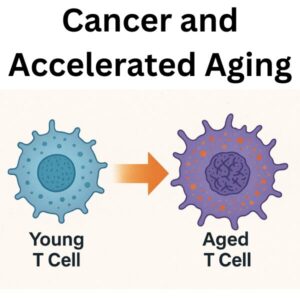Why do some people develop diabetes while others with similar lifestyles don’t?
The answer may lie in your molecular fingerprint. This article summarizes groundbreaking findings from a recent Cell (July 2025) paper and integrates insights from CDC, Nature, Lancet, and NCBI to explore how precision medicine is reshaping our understanding of insulin resistance and type 2 diabetes (T2D).
🔍 What Is Insulin Resistance?
Insulin resistance is a condition in which the body’s cells fail to respond properly to insulin, leading to elevated blood glucose. According to the CDC, it is a precursor to type 2 diabetes and often develops silently over time, increasing the risk of cardiovascular disease and metabolic disorders.
It commonly coexists with obesity, inflammation, and abnormal fat metabolism — forming the basis of what’s known as “metabolic syndrome.”
📚 Beyond Textbook Definitions: Why Do Responses Vary Among Individuals?
Traditional diagnostic criteria like fasting blood glucose or HbA1c provide useful benchmarks. But they fail to explain why individuals with similar scores can have different disease trajectories or treatment responses.
This is where individualized molecular signatures come into play. Advances in omics — particularly proteomics and transcriptomics — are helping researchers decode these personalized patterns and develop precision diagnostic tools.
🧪 A Landmark Study in Cell: Muscle Proteomics Reveal Predictive Signatures
The 2025 Cell study by Kjærgaard et al. analyzed skeletal muscle samples from over 120 participants, profiling both the proteome and phosphoproteome before and after insulin stimulation.
Key findings:
- Over 250 insulin-responsive phosphoproteins identified
- Distinct response patterns in insulin-resistant individuals
- Predictive models using fasting + stimulated profiles accurately estimated whole-body insulin sensitivity
This comprehensive proteomic fingerprint offers a new layer of resolution beyond conventional biomarkers like Akt or GLUT4.
🧬 Interplay of Genomics, Sex, and Lipid Metabolism
The study also revealed significant sex differences in muscle insulin signaling, along with links to mitochondrial function, lipid oxidation, and inflammatory pathways.
By integrating transcriptomics, metabolomics, and phosphoproteomics, the authors were able to draw individualized metabolic maps — a step closer to precision diagnostics.
📈 Integrating Insights from Nature, Lancet, and NCBI
A 2024 review in Nature Reviews Endocrinology emphasizes the organ-specific nature of insulin resistance. Liver, muscle, and adipose tissues respond differently, and gut microbiota and immune status can modulate these effects.
The Lancet Diabetes & Endocrinology highlights advances in risk modeling using omics data — some models have improved clinical prediction accuracy by 20–30% when including proteomic features.
Meanwhile, NCBI’s medical literature outlines the pathophysiology of insulin resistance as a complex network of genetic, epigenetic, and lifestyle factors.
🔬 Why Proteomics Is Crucial in Precision Medicine
While DNA offers the blueprint, proteins are the actual workforce of the cell. Proteomics provides real-time snapshots of biological processes, while phosphorylation acts as the on/off switch for signaling pathways.
This approach uncovers hidden bottlenecks in metabolic responses that are invisible to genetic or RNA-level analysis alone.
💡 Challenges and Therapeutic Applications
Although the Cell study focused on skeletal muscle, insulin resistance is a multi-organ issue. Future work must expand to liver, adipose tissue, and pancreatic β-cells, while incorporating dynamic time-course data.
Therapeutically, this opens doors to novel targets — including signaling bottlenecks and “compensatory” proteins not previously considered in drug design.
🧭 Editor’s Note: A New Era of Diabetes Understanding
This study exemplifies how multi-omics and system biology are redefining disease at the individual level. Insulin resistance is no longer a uniform process — it’s a diverse spectrum of intracellular signaling dysfunctions.
For scientists, clinicians, and life science investors alike, this represents both a challenge and an opportunity: A chance to move from “one-size-fits-all” diagnostics to personalized, dynamic disease models.
🔗 Source: Kjærgaard et al., Cell, July 2025 🔗 Additional references: CDC, Nature Reviews, The Lancet Diabetes, NCBI Bookshelf
This article was produced by the editorial team at Morningglorysciences.









Comments